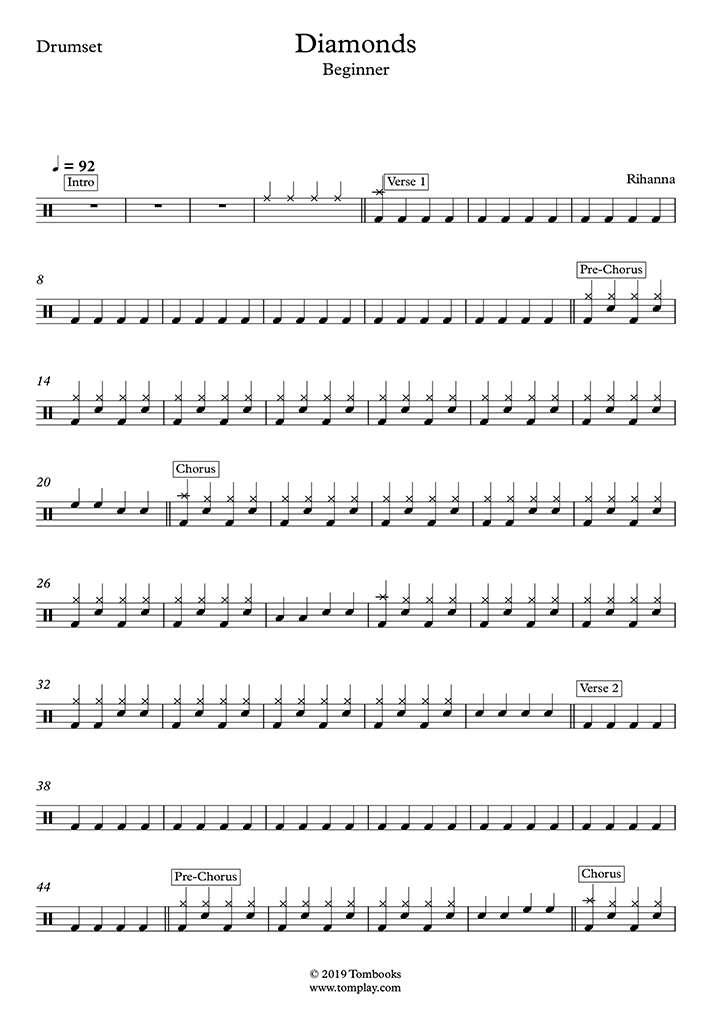

The pause delays “resolution” on that downbeat, thus exacerbating tension and augmenting the intensity of the “hit” by creating a “harder they come, the harder they fall” effect.

Psy’s infamous “Gangnam Style” and Baauer’s even more infamous “Harlem Shake” both do this: they “soar” up to a peak of rhythmic intensity by increasing the rate at which a percussion and/or vocal pattern is repeated they then “pause” by dropping out (most of) the instrumentals for 1 bar before landing hard on the downbeat of the following measure. Many dubstep and EDM-pop songs use a combination of a soar and a pause-drop to create a musical climax. “Diamonds” uses the language and semiotics of tonality to produce harmonic melancholy. Constantly circulating around and returning to this minor third, the song generates melancholic affects. The minor third is strongly associated with sad, depressed, melancholic affect-it’s sad, whereas the leading-tone interval (i.e., the theme from Jaws) is more scary. This looping can be heard as melancholic in two ways: first, as a melancholic failure to get over the lost/lacking D/fifth/dominant second, the circling around the minor third creates the effect of a harmonic Bermuda triangle. The song continually circles around the minor third and the absent/hauntological major fifth-the two main functional relationships in tonal chord structure. It plays around with the minor-third relationship between G and Bb, and evokes D as an absent, spectral/hauntological dominant/major fifth (A is the dominant of D, which is the dominant of G). The song is basically a loop of G Bb A (Bb) chords. However, it does have a harmonic structure which is rooted in the semiotics of functional tonality. There are no cadences, no resolution, no key changes, etc., so it’s not really tonal. The song uses some of the language and conventions of tonal harmony without itself being a “tonal” piece. Musically, the song invokes both tonal and EDM-style compositional devices, but uses them in stunted, under-realized ways. This capitalizing on anti-social damage is what I will later call “melancholy.”

Like a computational or biological virus, this damage causes its host to run sub-optimally. It does not optimize the health of neoliberal, multi-racial white supremacist patriarchy or, the opportunity cost to get it to do this is too high. The anti-sociality of this damage, its diminishment rather than its augmentation of MRWaSP, is what makes it read/feel like illness. The album is “sickening” because it is difficult to capitalize on in any but anti-social ways, in ways that amplify damage rather than amplify surplus value. This sort of “health” is actually really pathological.) We listeners can’t effectively or efficiently turn her damage in to our own human capital (except, perhaps, by concern-trolling and treating our attempts to save this brown woman from her brown man as a badge of our own multi-racial-white-supremacist-patriarchal cred). She’s turning a negative (damage) into a positive (profit), but this profit does not come in the form of efficiently capitalizable human capital- it augments and amplifies (so-called) sickness, not (so-called)“health” (‘health’ here is an index of the efficient functioning of hegemonic institutions, the biopolitically healthy society…which is a racist, misogynist, ableist society. MusicOMH’s Philip Matusavage takes the “saving-brown-women-from-brown-men” paternalism even farther: Brown - the new one, and the remix of “Birthday Cake,” from her 2011 album, “Talk That Talk” - are some of her best” (emphasis mine). The New York Times’s rock critic John Caramancia comes across particularly paternalistically, phrasing his critique of the album as a reprimand to Rihanna: “ To make public art with the person who physically abused you is immature, pre-feminist, post-ethics …It doesn’t help at all that her songs with Mr. To his credit, Martin avoids the egregious, paternalist concern-trolling that motivates many of his peers. Dan Martin’s NME review reads the album primarily, and almost entirely, through the lens this collaboration. For example, Spin’s Caryn Ganz treats Rihanna’s “unapologetic love of Chris Brown” as central to the album’s interpretation and cultural significance, LA Times’s Randall Roberts opens his review with a discussion, not of the lead single, but of “Nobody’s Business,” her duet with Brown. Critics and fans filtered their responses to Rihanna’s Unapologetic through Robyn Fenty’s continued relationship with Chris Brown, who infamously assaulted her outside the 2009 Grammy Awards ceremony.


 0 kommentar(er)
0 kommentar(er)
